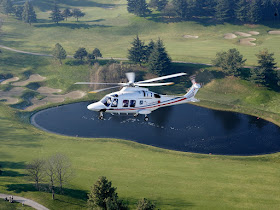 |
| Photo by Petty Officer 3rd Class Andrew Barresi, U.S. Coast Guard |
JUNEAU, Alaska — A Coast Guard Air Station Sitka MH-60 Jayhawk helicopter crew medevaced a woman from the cruise ship Celebrity Solstice near Noyes Island, west of Craig, Alaska, Wednesday.
The Jayhawk helicopter crew hoisted the 61-year-old woman and transported her to Ketchikan, Alaska, where a Guardian Flight crew was waiting for transport to higher medical care.
Coast Guard Sector Juneau watchstanders received notification from the captain aboard the Celebrity Solstice who reported that a woman was suffering symptoms of a heart attack. A flight surgeon for the 17th Coast Guard District recommended a medevac, and Sector Juneau watchstanders directed the launch of an Air Station Sitka helicopter crew.
“Understanding the severity of the woman's reported condition, we knew we had to get on scene as soon as possible and complete a safe hoist,” said Lt. Jason Maddux, Jayhawk co-pilot who assisted with the hoist. “The efforts of everyone aboard the helicopter and those of the cruise ship staff taking our instruction allowed us to get the woman to Guardian Flight where she was taken for further care.”
Weather at the time of the hoist was 5-mph winds with 10 miles of visibility.
The Jayhawk helicopter crew hoisted the 61-year-old woman and transported her to Ketchikan, Alaska, where a Guardian Flight crew was waiting for transport to higher medical care.
Coast Guard Sector Juneau watchstanders received notification from the captain aboard the Celebrity Solstice who reported that a woman was suffering symptoms of a heart attack. A flight surgeon for the 17th Coast Guard District recommended a medevac, and Sector Juneau watchstanders directed the launch of an Air Station Sitka helicopter crew.
“Understanding the severity of the woman's reported condition, we knew we had to get on scene as soon as possible and complete a safe hoist,” said Lt. Jason Maddux, Jayhawk co-pilot who assisted with the hoist. “The efforts of everyone aboard the helicopter and those of the cruise ship staff taking our instruction allowed us to get the woman to Guardian Flight where she was taken for further care.”
Weather at the time of the hoist was 5-mph winds with 10 miles of visibility.
Video by Petty Officer 1st Class Jon-Paul Rios, U.S. Coast Guard




















